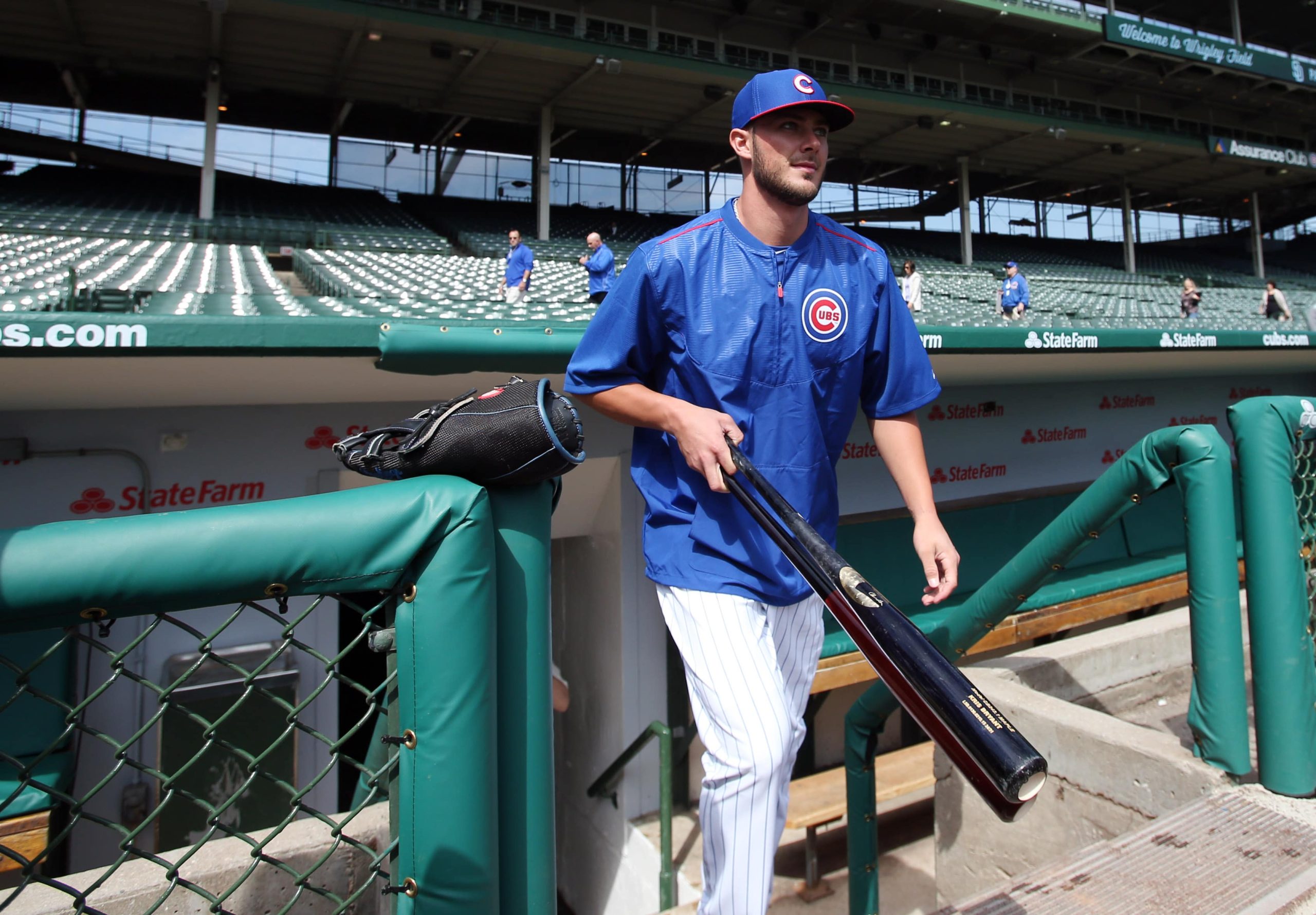
Two elite prospects, each the same age, playing the same position for the same team, but separated by a decade. One started the season in the minors, the other in the majors.
As it turns out, that decade made all the difference.
Ten years ago, Kris Bryant delivered a monster spring training for the Chicago Cubs at 23 years old. He was sent to the minor leagues anyway. The Cubs kept Bryant in Triple A for 12 days, just long enough to avoid accruing a year of major-league service time. This would mean the difference between Bryant becoming a free agent after 2020 and Bryant becoming a free agent after 2021.
Advertisement
Called up on April 17, 2015, Bryant played third base and batted cleanup in his debut. He won Rookie of the Year. He was the National League MVP and a World Series champion the next season.
By delaying Bryant’s debut less than two weeks, the Cubs gained four months of his last All-Star season and seemingly did little to stall their long-awaited championship. The Cubs traded Bryant three months before he became a free agent.
This year, it was Matt Shaw. Also 23, also a first-round pick, also a third baseman for a Cubs team with an opening at the hot corner, Shaw had an underwhelming spring training, but the Cubs put him on their Opening Day roster anyway. He played third base and batted fifth in his debut. Thanks to rules added to the 2022 collective bargaining agreement, if Shaw stays in the majors and wins Rookie of the Year, or if he finishes top three in MVP voting any of the next three seasons, the Cubs will get an extra draft pick.
So by not delaying Shaw’s debut, the Cubs gave themselves a chance to add more talent in the future.

Kris Bryant’s 2015 debut was delayed for service time reasons. (Jerry Lai / USA Today)
Incentives drive decision-making, and the 10-year leap from Bryant to Shaw suggests at least one incentive in the latest CBA is working. The prospect promotion incentive was intended to minimize the barriers that made it logical to keep a player like Bryant in the minor leagues while adding motivation to give a player like Shaw an immediate opportunity.
“The numbers are pretty mind-boggling,” said Craig Edwards, a Major League Baseball Players Association senior analyst for economics and collective bargaining, “in terms of how successfully we’re seeing these top prospects promoted to the big leagues.”
Shaw is one of more than a dozen young players since 2022 whose path to the big leagues was cleared and likely accelerated by the PPI program. The impact is not universal, nor is it singular, but rosters across the sport suggest the incentives are working. Numbers from the league office show that from 2012 to 2021 — under three previous CBAs — an average of 2.6 Baseball America Top 100 prospects made Opening Day rosters despite having no previous major league experience. In the first three seasons under the new CBA, that number has more than doubled to an average of 5.8.
Said Edwards: “This isn’t just a benefit to this player or that player. It’s a benefit to the game.”
The heart of the issue is service time. Players reach free agency after six years of major league service, and they reach arbitration after three years. A typical major league season is 186 days, but 172 days on the roster is considered a full year of service. Thus, teams have always had incentives to keep elite talent in the minors for a couple of weeks to delay free agency and gain a year of control. (The season used to be 183 days, hence the 12 days Bryant spent in Triple A.)
Advertisement
Detroit Tigers pitcher Casey Mize is the team’s union rep and among many proponents of the new incentives. Drafted first in 2018, Mize debuted midway through the truncated 2020 season and did not receive a full year of service.
“In the past there’s been players that could have helped the team in the first parts of the season that were held in the minor leagues for reasons beyond performance,” Mize said. “I think that’s factual. Anybody can try to beat around that, but it’s true. It was happening. And probably still is on some level.”
More than a decade ago, MLB introduced super-two status as a path to earlier arbitration eligibility for players who did not have three full seasons in the majors, but little was done to address delayed free agency until the prospect promotion incentives were added to the 2022 CBA.
Under the PPI rules, teams can earn additional draft picks — high picks, immediately after the first round — by giving elite prospects a full year of service time. Players with little or no MLB service (rookies, basically) who appear on two of three top 100 prospect rankings (MLB Pipeline, Baseball America and ESPN) are PPI-eligible.
If a PPI-eligible player makes the Opening Day roster or gets promoted within two weeks, then stays long enough to earn a full year of service time and wins Rookie of the Year, his team will receive an additional pick in the next year’s draft. A team can also receive an additional draft pick if a PPI player goes on to finish top-three in Cy Young Award or MVP voting before becoming arbitration-eligible, which is generally a three-year window.
“Anything we can do to incentivize getting your best players to the big leagues as quickly as possible, if they’re developed and ready, is good for the players, fan base and the organization,” Mize said. “I think the incentive is a way to help speed that along, and we’re obviously seeing that that’s happening on some level. Not as much as we would like, but it’s a good start.”
Advertisement
Two weeks into the 2025 season, 10 PPI-eligible rookies are on major league rosters. Three debuted briefly last season, five had no major league experience when they made Opening Day rosters, and two more were called up before Thursday, which was the two-week cutoff for most teams.
“We’re seeing double and triple the numbers that we saw five to 10 years ago,” Edwards said. “A lot of these players are making it throughout the whole season so that they’re showing that they did in fact belong, and they’re excelling.”
MLB rookies with PPI eligibility
| Player | Team |
|---|---|
|
Texas Rangers |
|
|
Washington Nationals |
|
|
Detroit Tigers |
|
|
Los Angeles Dodgers |
|
|
Atlanta Braves |
|
|
Boston Red Sox |
|
|
Houston Astros |
|
|
Chicago Cubs |
|
|
Colorado Rockies |
|
|
Pittsburgh Pirates |
|
|
Cincinnati Reds |
*Sasaki qualified because he was signed with international bonus pool money (as an amateur would be) and not as a foreign professional.
**Lowder is currently on the IL but has PPI eligibility.
The Seattle Mariners put 21-year-old Julio Rodríguez on the Opening Day roster in 2022 and earned a draft pick when Rodríguez won Rookie of the Year. The Kansas City Royals also put Bobby Witt Jr. on the 2022 Opening Day roster and earned a draft pick when he was the MVP runner-up last season. The Arizona Diamondbacks (Corbin Carroll) and Baltimore Orioles (Gunnar Henderson) have also received PPI picks as rewards for promoting elite prospects.
The Pittsburgh Pirates, on the other hand, did not promote top pitching prospect Paul Skenes until May 11 last year, meaning they did not receive a draft pick when Skenes won Rookie of the Year. Not only that, another aspect of the rule says that any PPI-eligible player who finishes first or second in Rookie of the Year voting is awarded a full year of service time regardless of when he actually debuted. That means the Pirates neither received a draft pick nor delayed Skenes’s free agency when he won that award. The same thing happened to the Orioles with Adley Rutschman, the Atlanta Braves with Michael Harris II and the Cleveland Guardians with Tanner Bibee (though Harris and Bibee have since signed long-term extensions, negating concerns about their free-agent clocks).
“You’re just changing the calculation,” Edwards said, “where if you think you’re going to need a guy at some point during the season, it makes sense to put him up and get the production for the full year rather than sit him down for a month or two months.”
The reason for each decision to roster a PPI-eligible player varies from team to team. This year, the Braves had an injury at catcher and gave the job to rookie Drake Baldwin. The Boston Red Sox had a hole at second base and chose Kristian Campbell, whom they signed to a long-term extension within a week of Opening Day. The Cubs are favorites in a relatively weak NL Central and pegged Shaw as their best third baseman.
Advertisement
PPI is surely not the lone factor in those call-ups. The game is trending younger anyway — according to Baseball-Reference, the average position player in 2024 was 27.9 years old, a full year younger than in 2010 — and increasing the roster limit from 25 to 26 players made it easier to carry a less established player. But for some close calls, the prospect promotion incentive might have been the difference between adding a player in early March and waiting until mid-April.
“I think it’s a factor but a relatively small factor,” said one long-time major league executive, granted anonymity for his candor. “It has probably influenced the behavior of small-market teams more than larger market teams because they are less likely to be able to retain the player beyond their initial term of control, and large market clubs are more likely to feel pressure to put the best team on the field in the present even without the PPI.”
San Diego Padres center fielder Jackson Merrill, Texas Rangers outfielder Wyatt Langford and New York Yankees shortstop Anthony Volpe are among the notable players who retain PPI status now in their second or third major league seasons. Any one of them still could net their teams a draft pick with an award-winning individual season.
Earlier this month, Merrill sat at a dais after signing a nine-year contract extension.
“I’m gonna play for a win,” Merrill said. “It’s just so much easier than playing for stats (or) playing for a prospect — whatever it’s called.”
Merrill might not know the name of PPI, but he did make the Padres’ Opening Day roster last season as a 20-year-old with no Triple-A experience. Maybe that would have happened anyway. The Padres had a good team with high expectations, and they knew Merrill was a good player. But incentives exist for a reason. As Merrill finished answering his question, Padres general manager A.J. Preller leaned over and spoke into the microphone.
“Even last year, when the Rookie of the Year vote came up,” Preller said, “Jackson said to me, ‘I really want us to get a first-round pick.’ It’s kind of where his head’s at.”
Incentives matter, whether you can name them or not.
(Top photo of Shaw signing autographs before the Cubs’ home opener: Geoff Stellfox / Getty Images)
This news was originally published on this post .





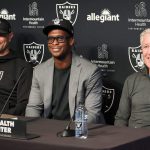
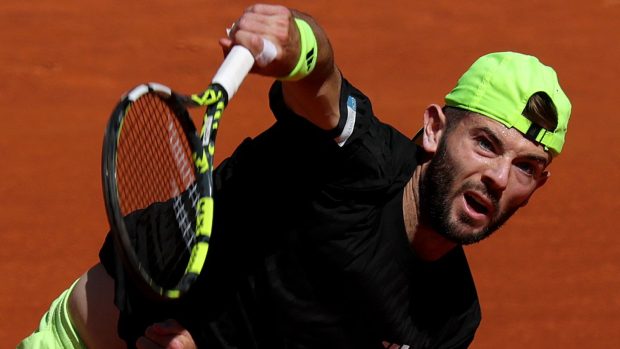
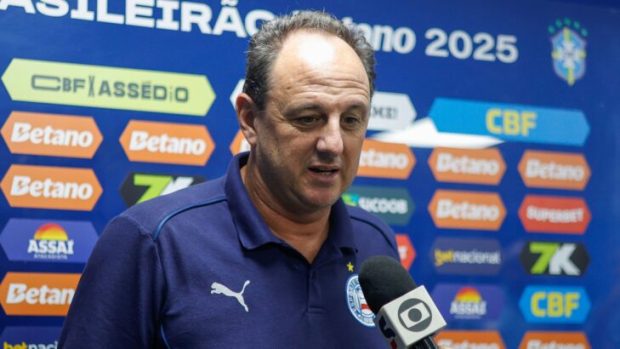
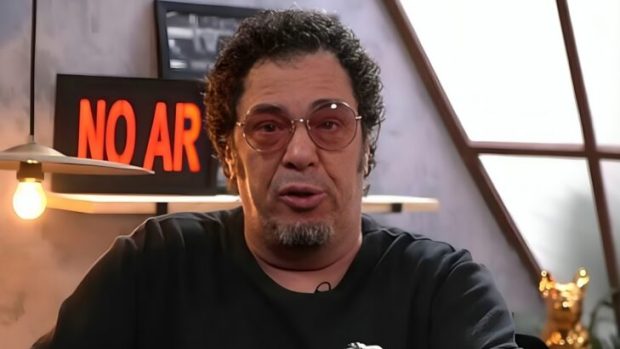
Be the first to leave a comment